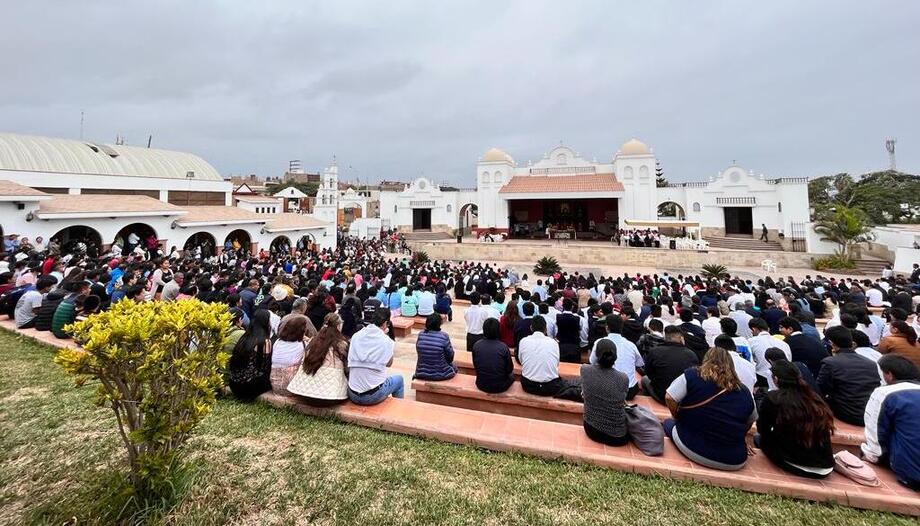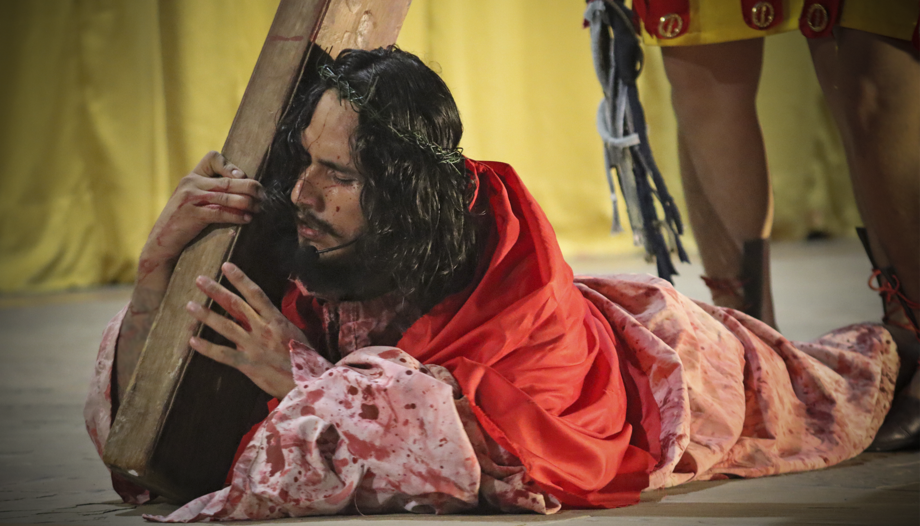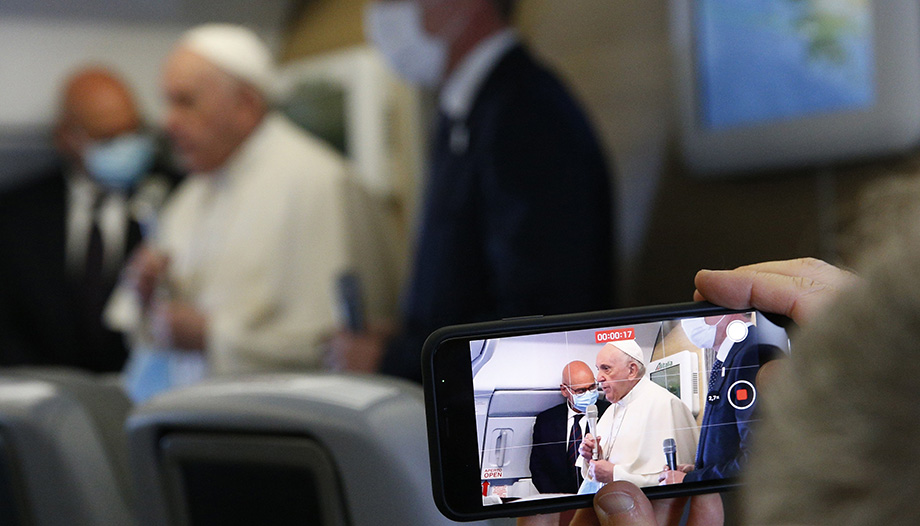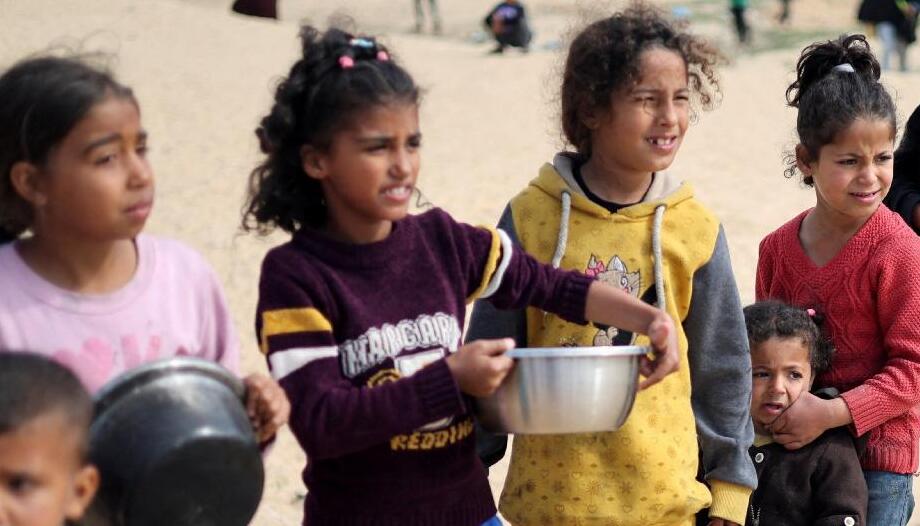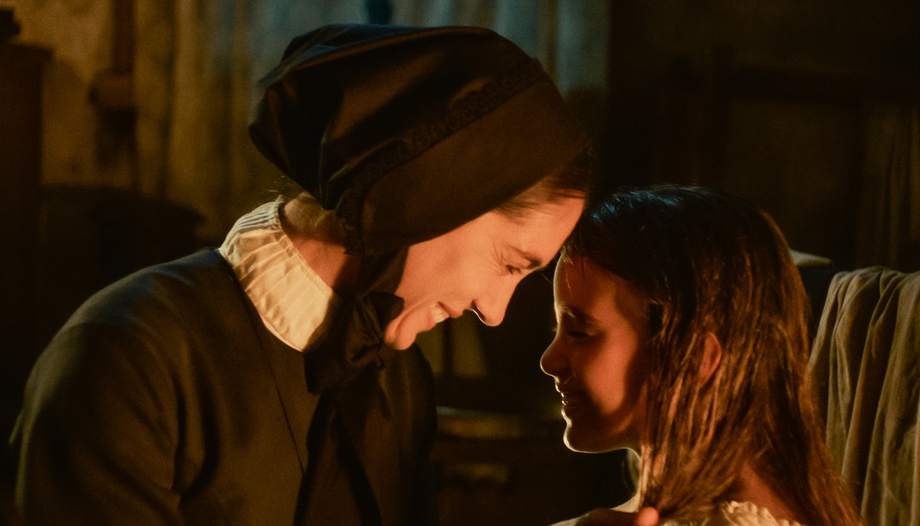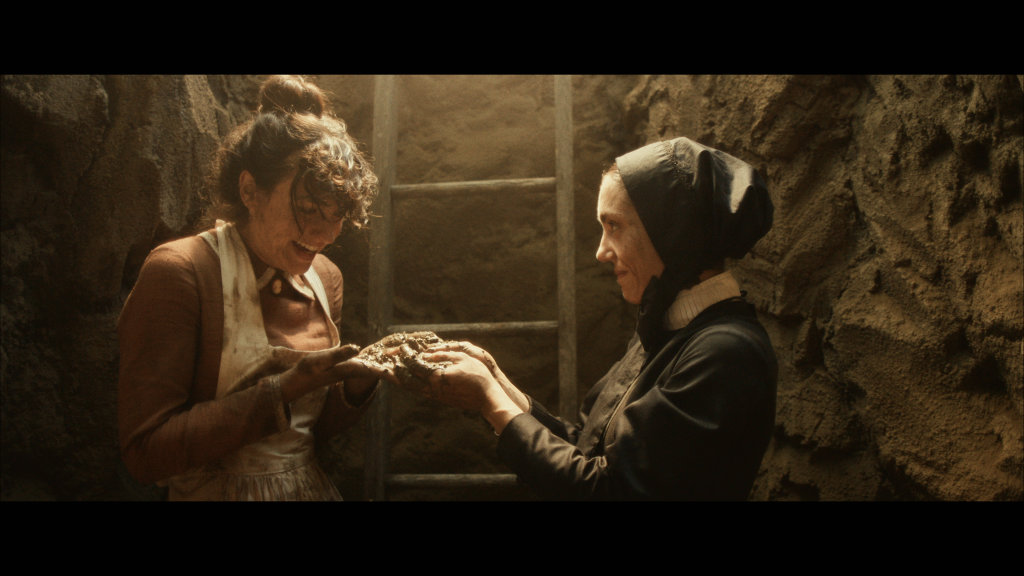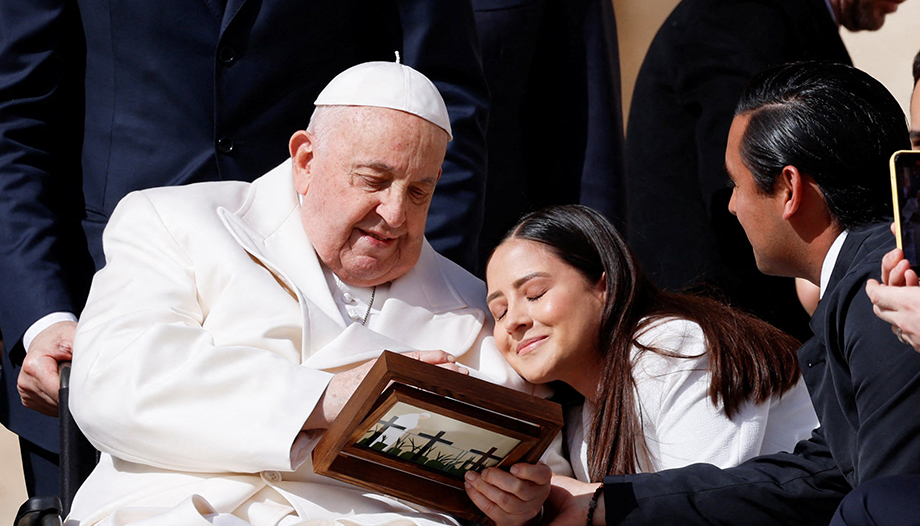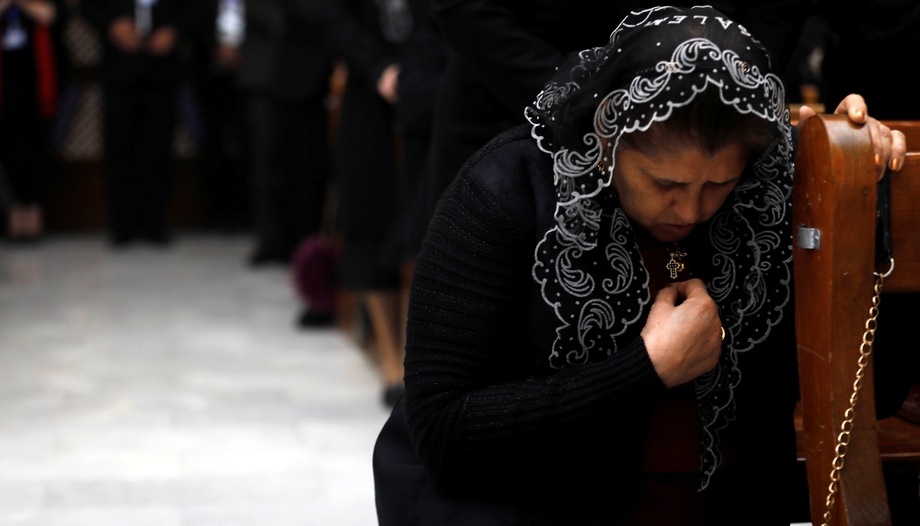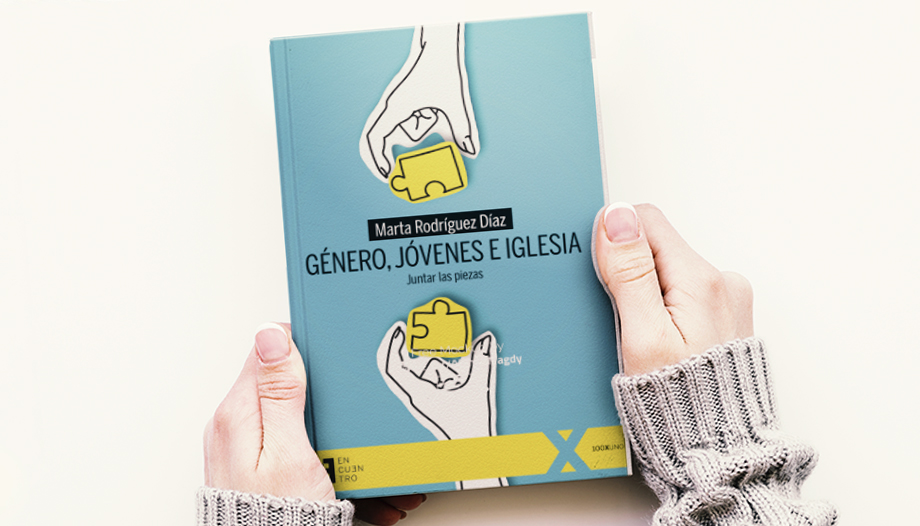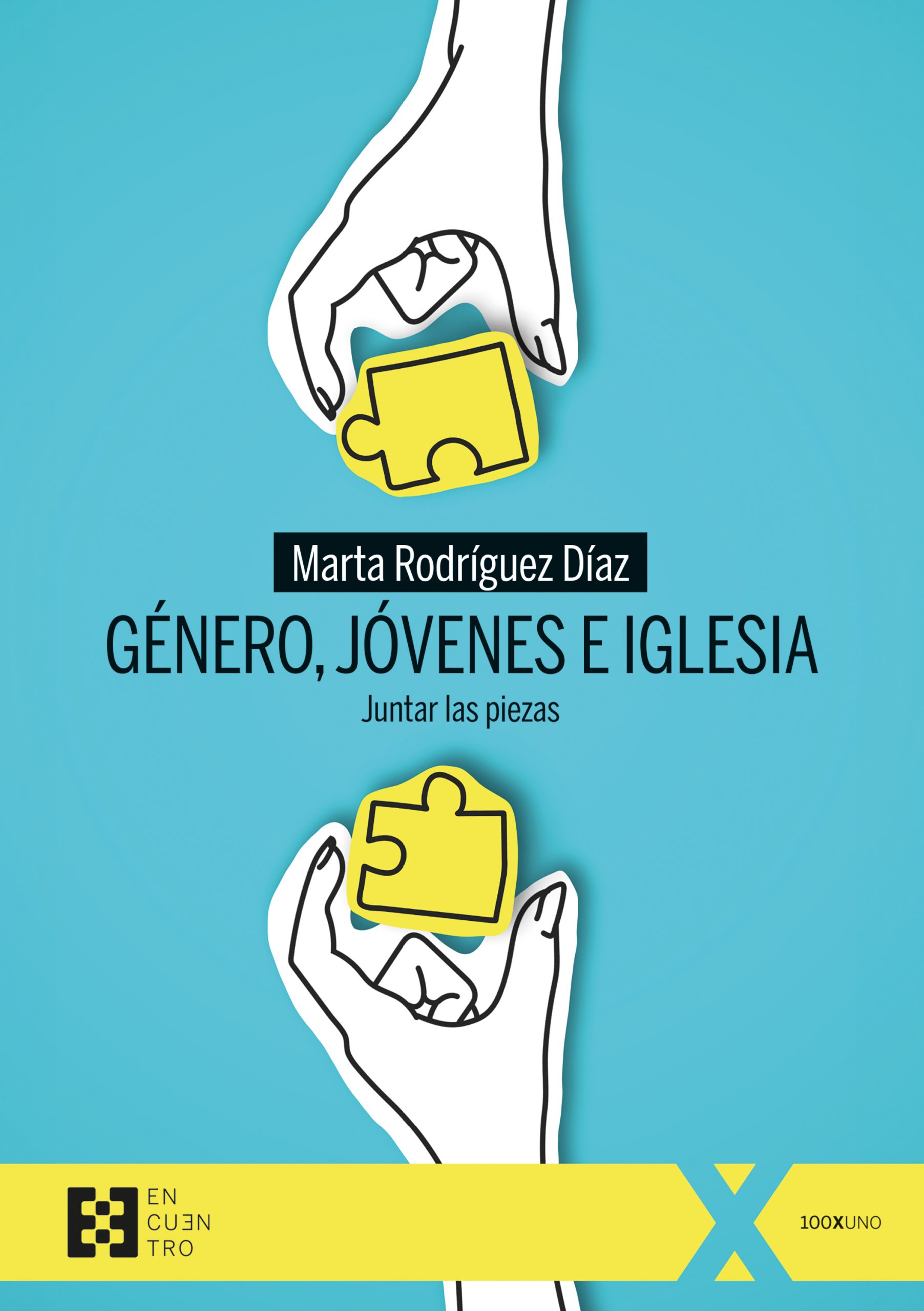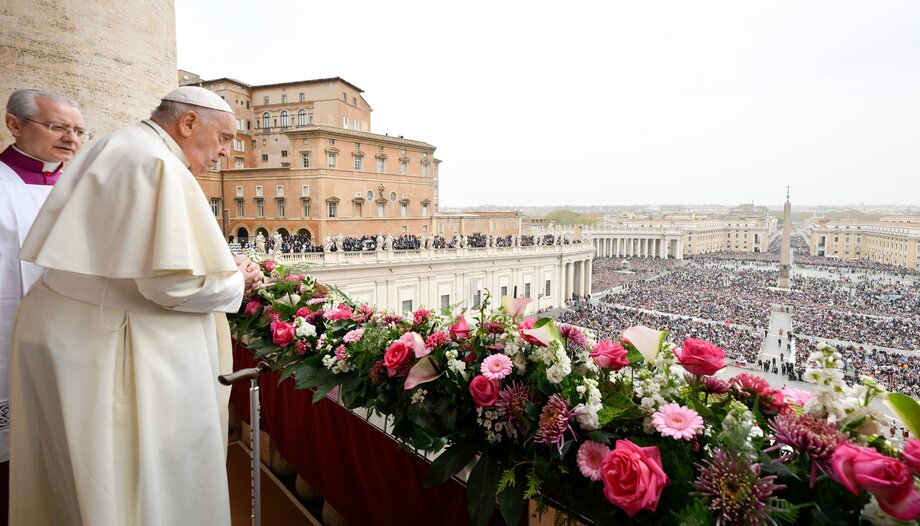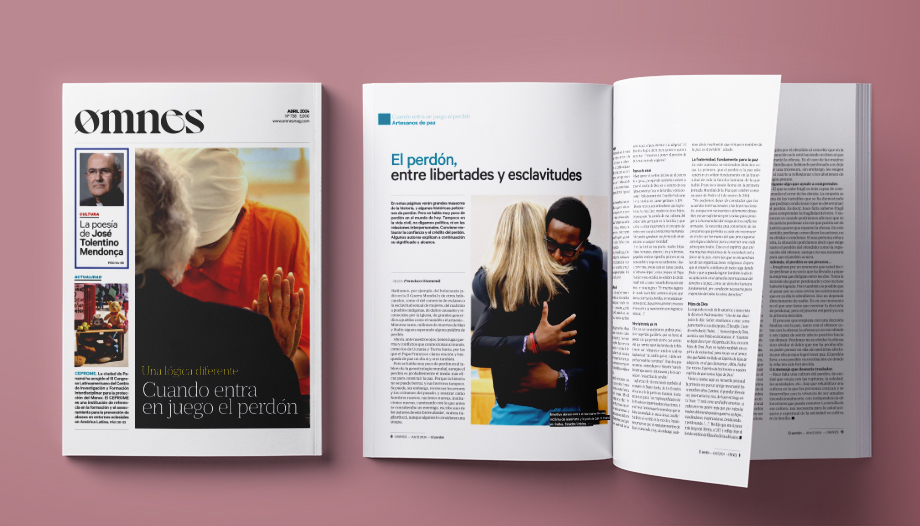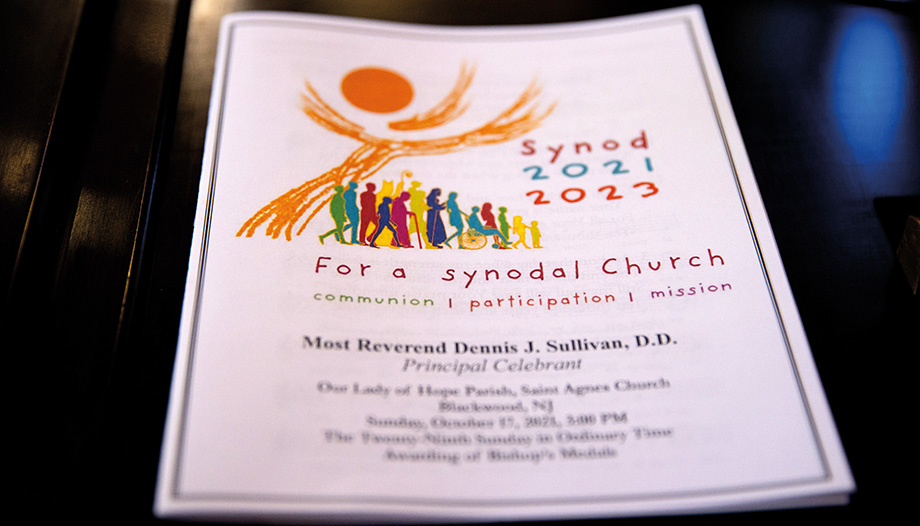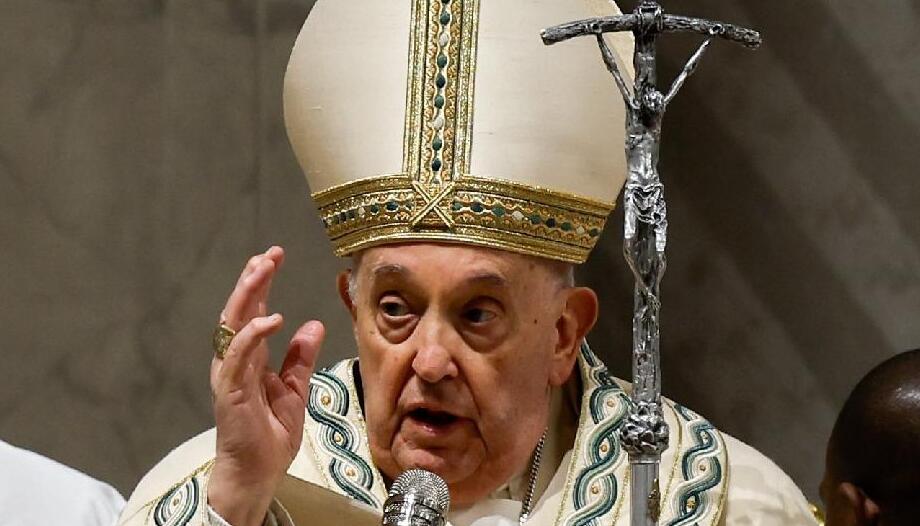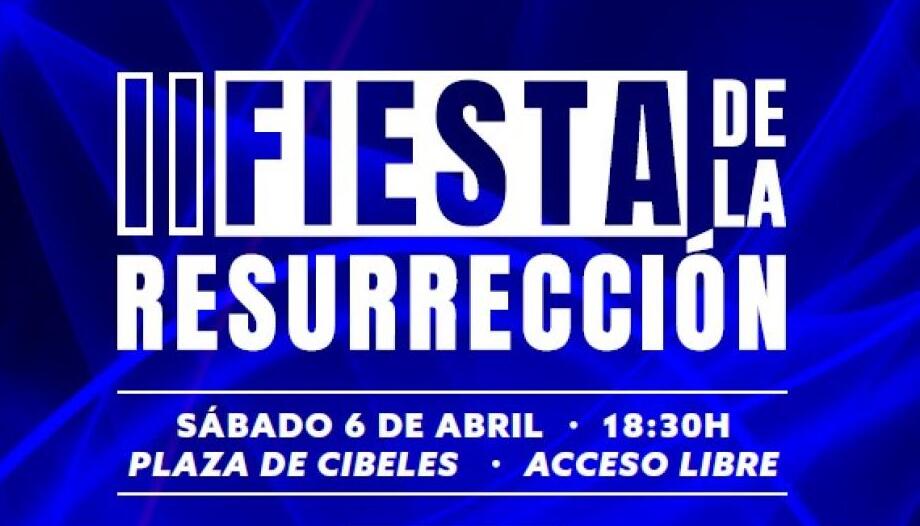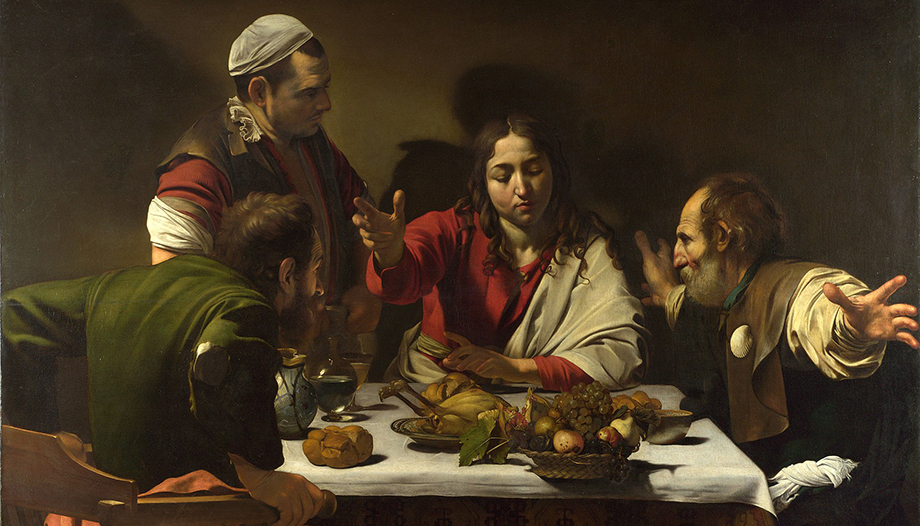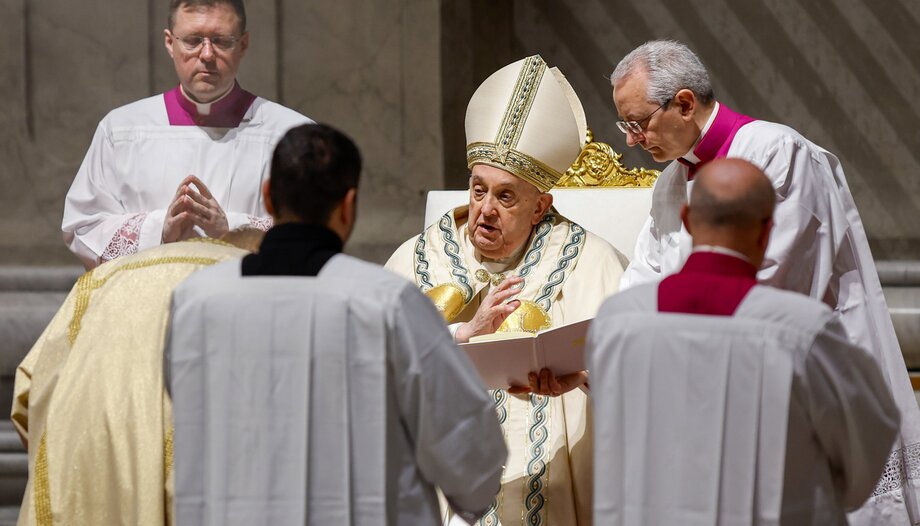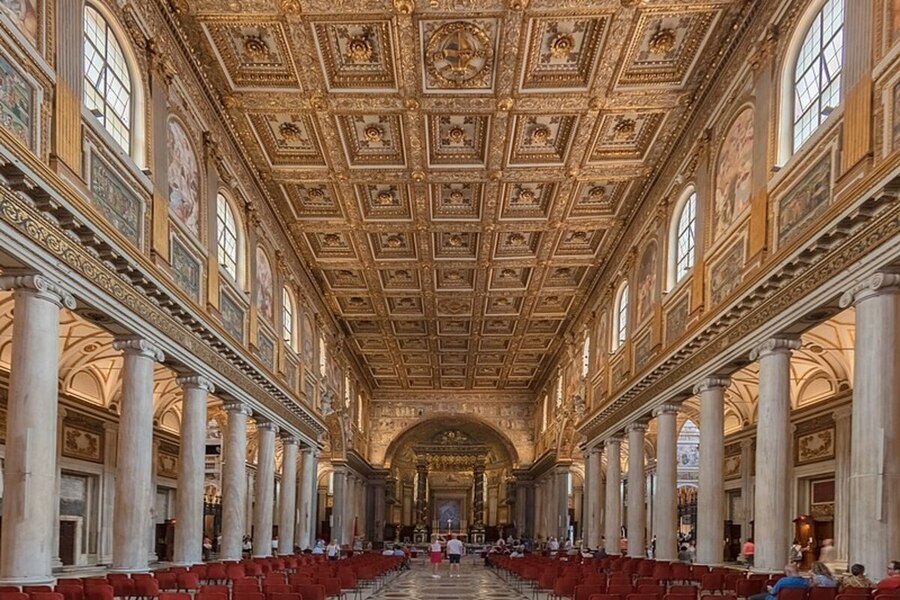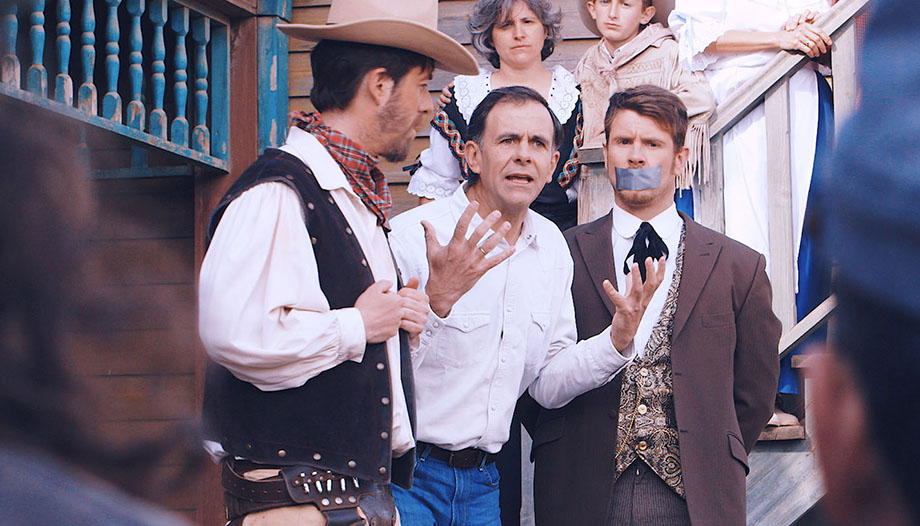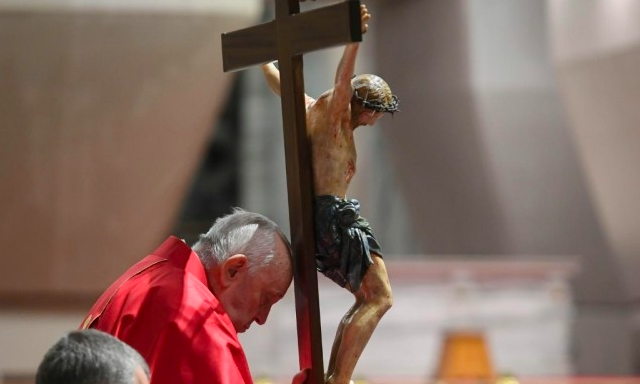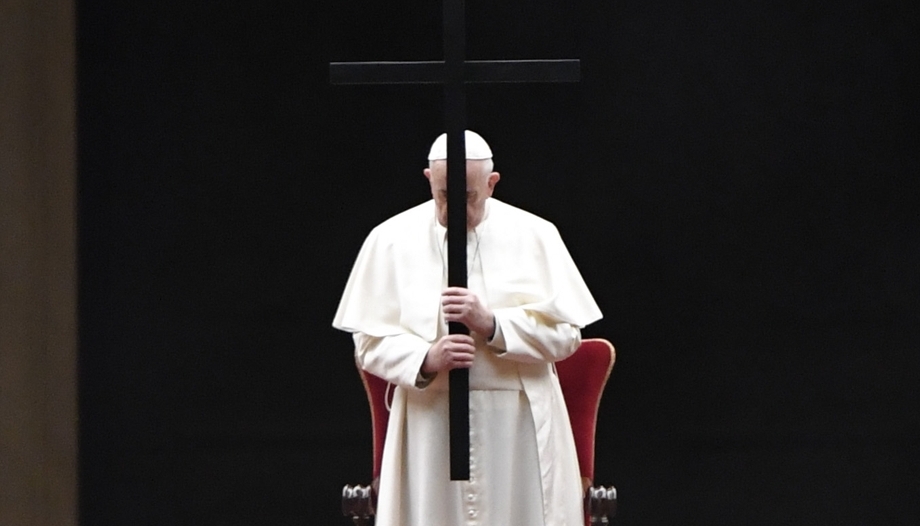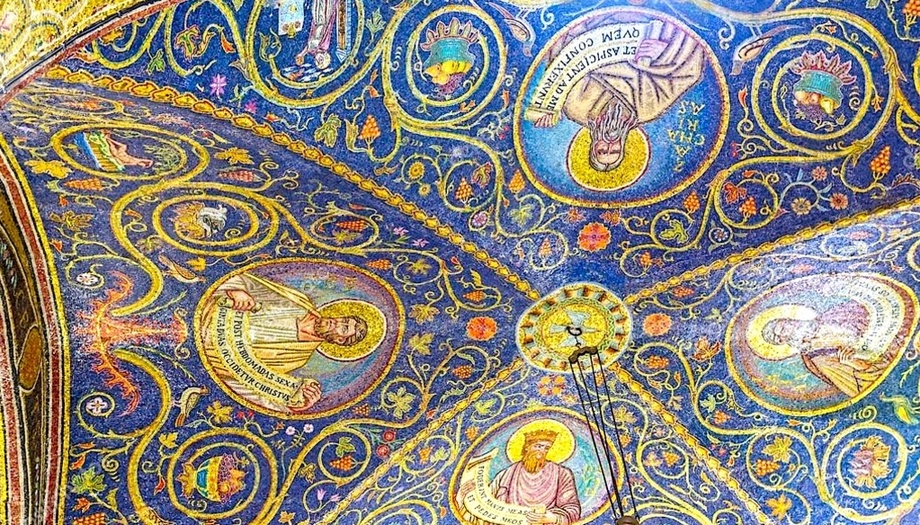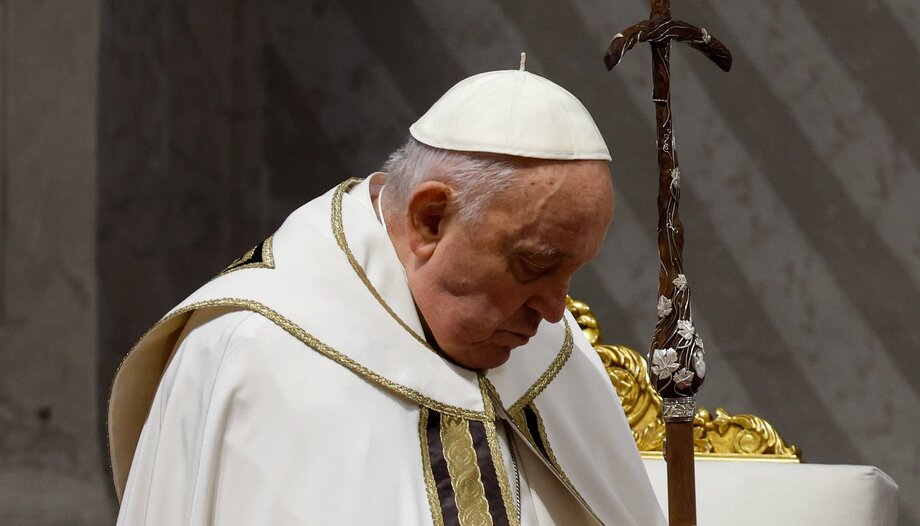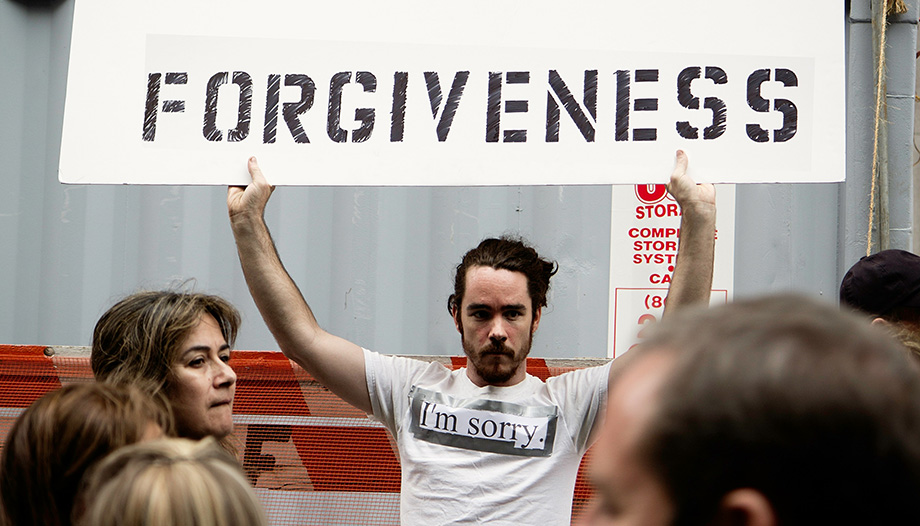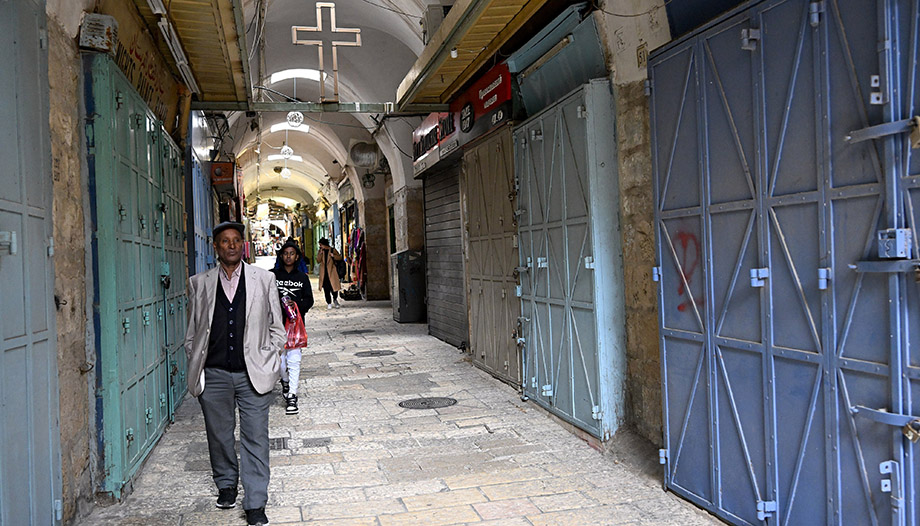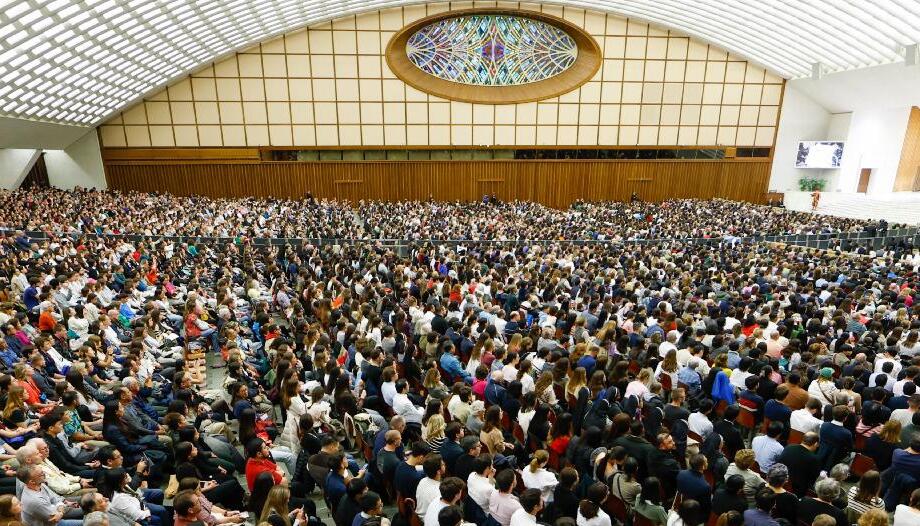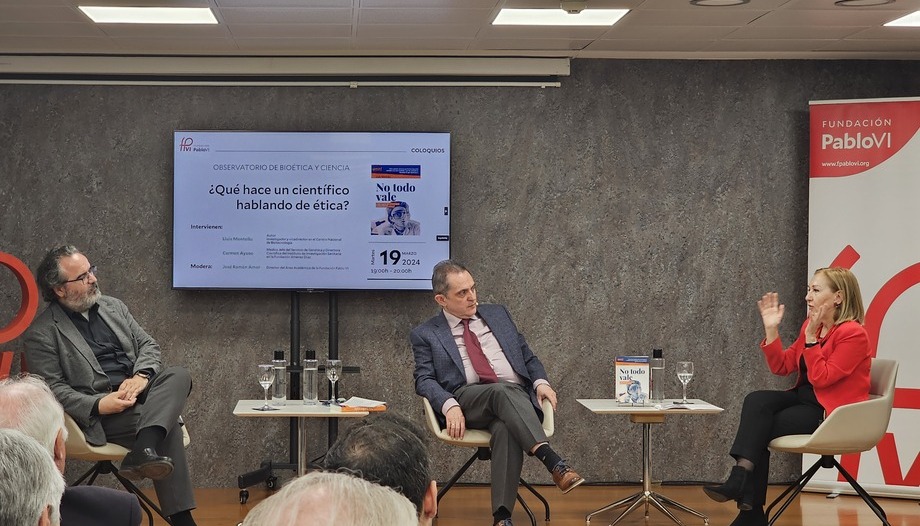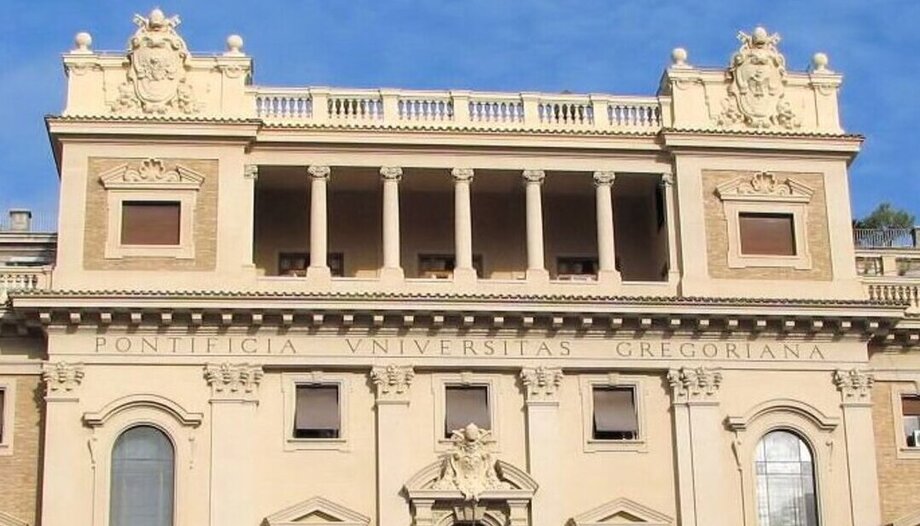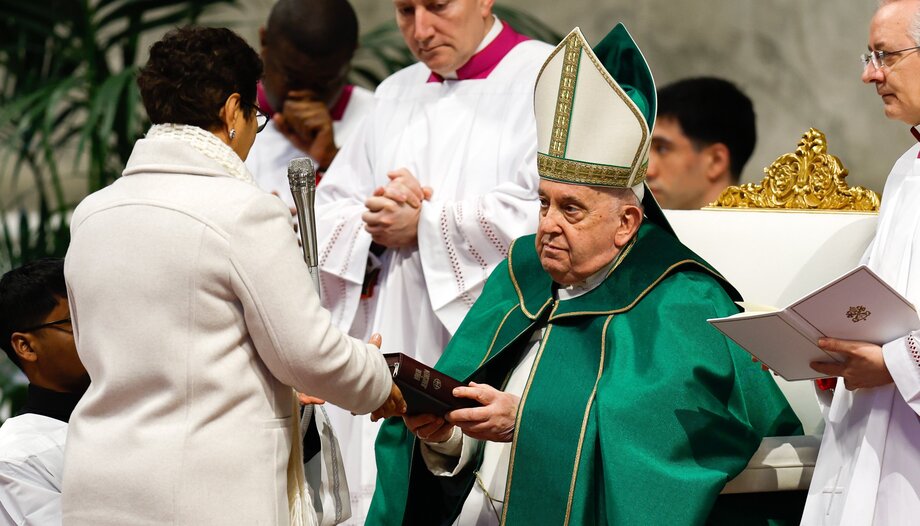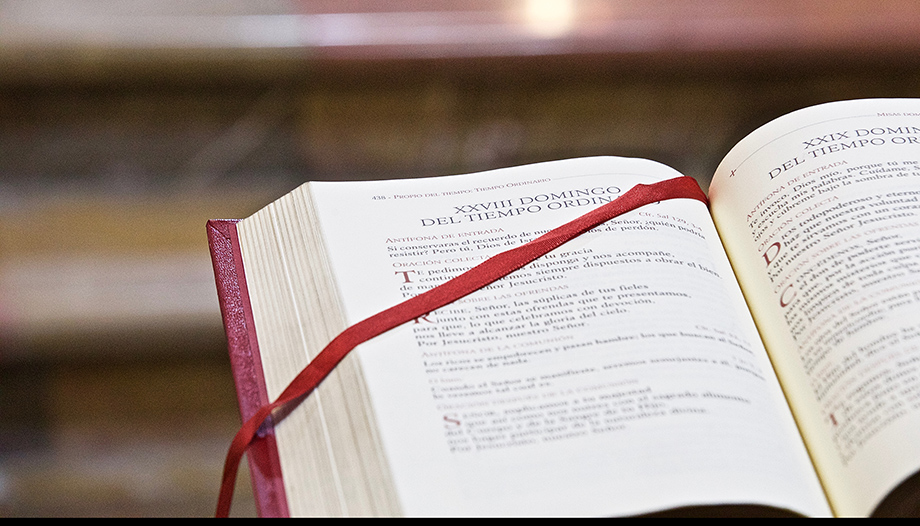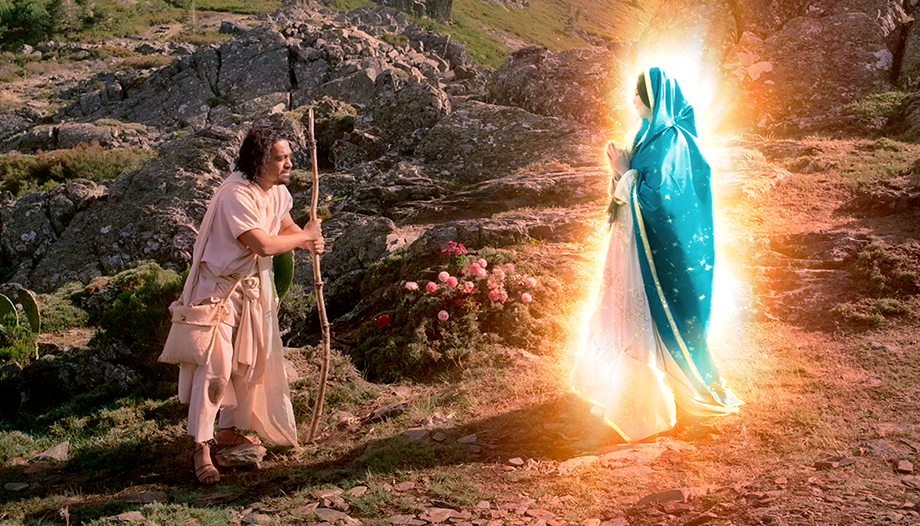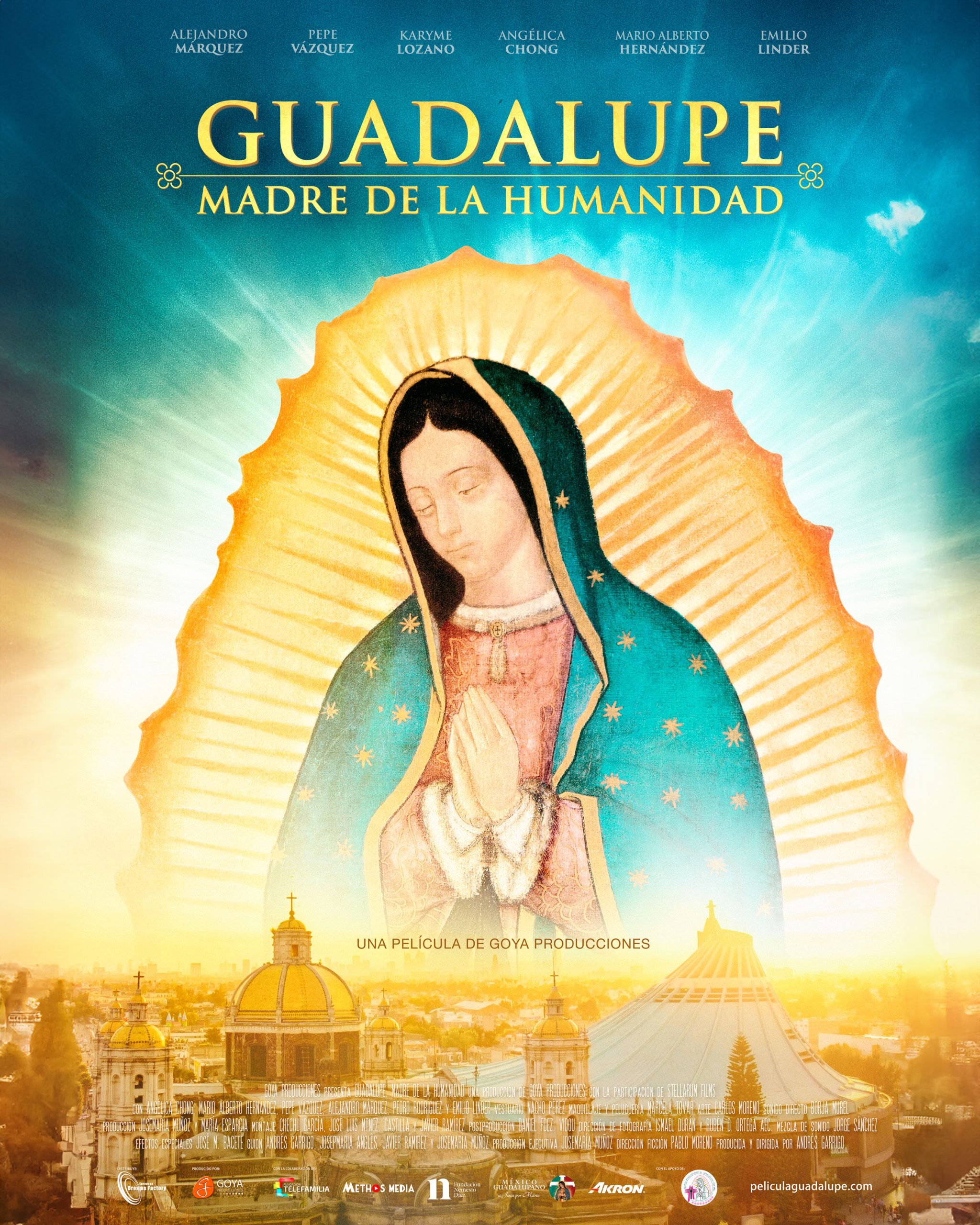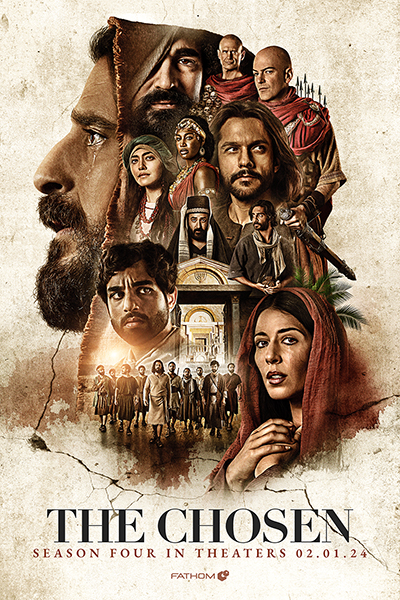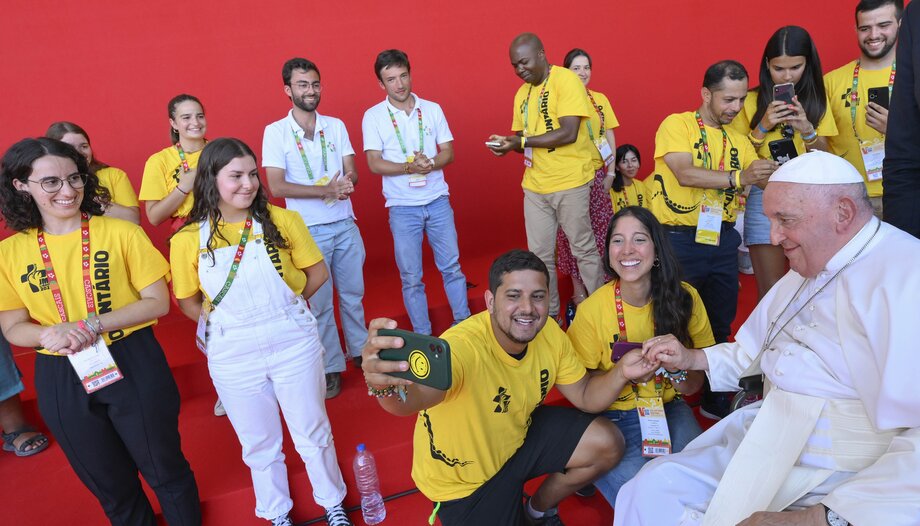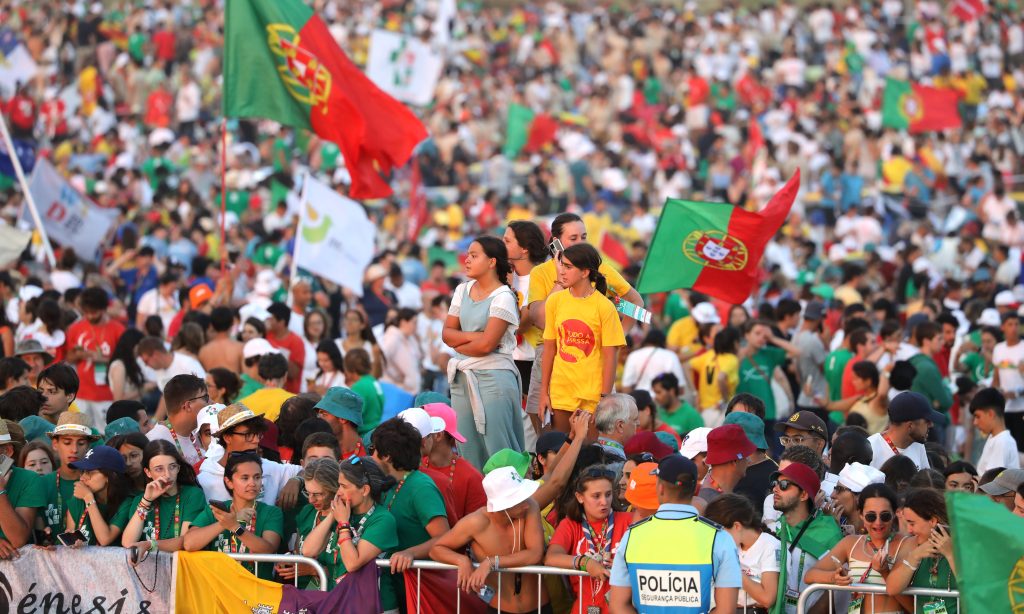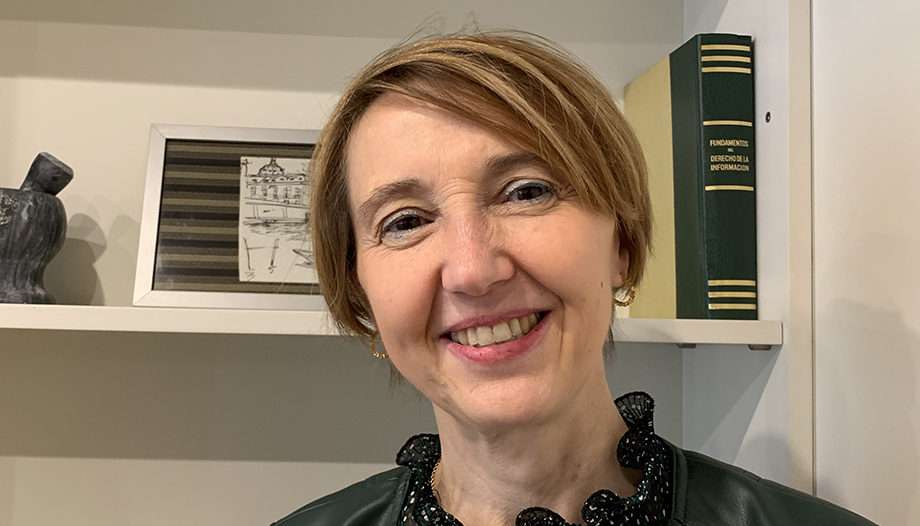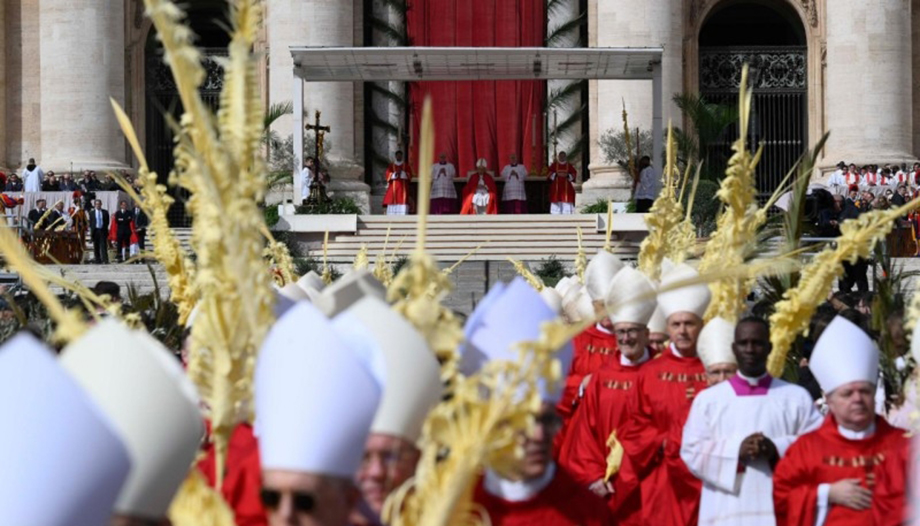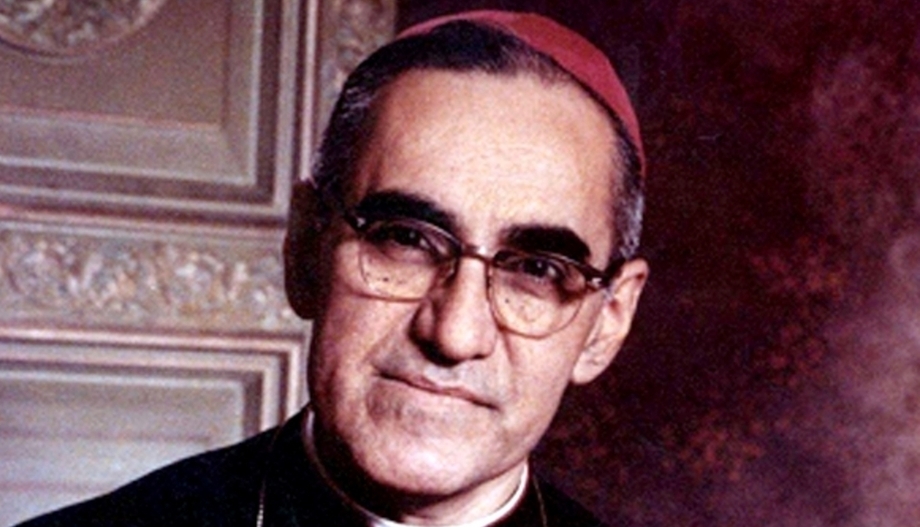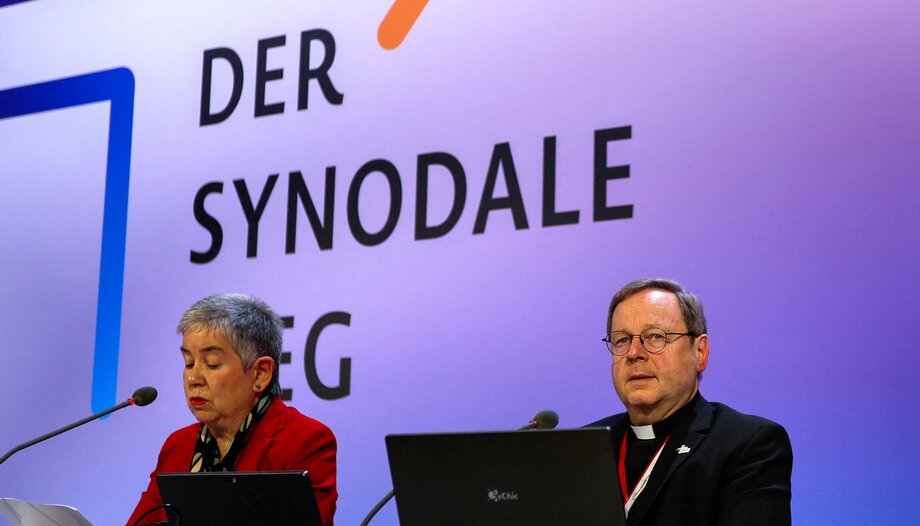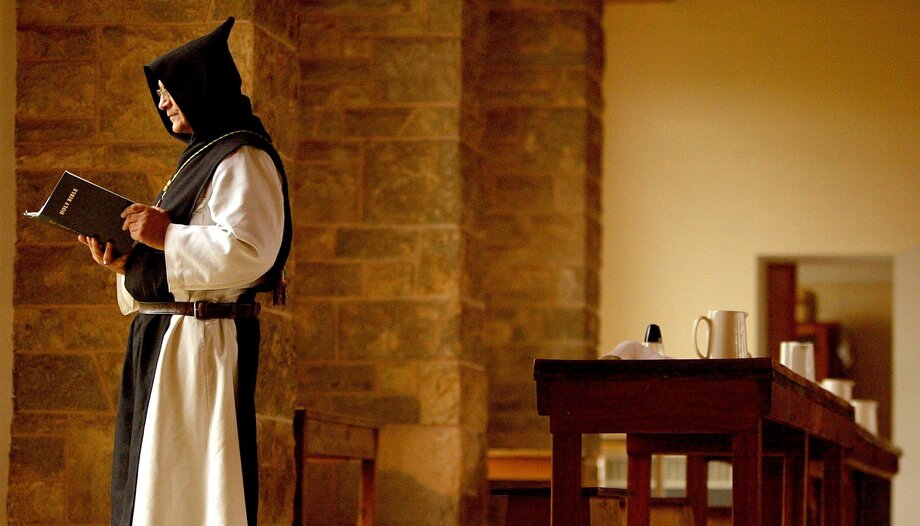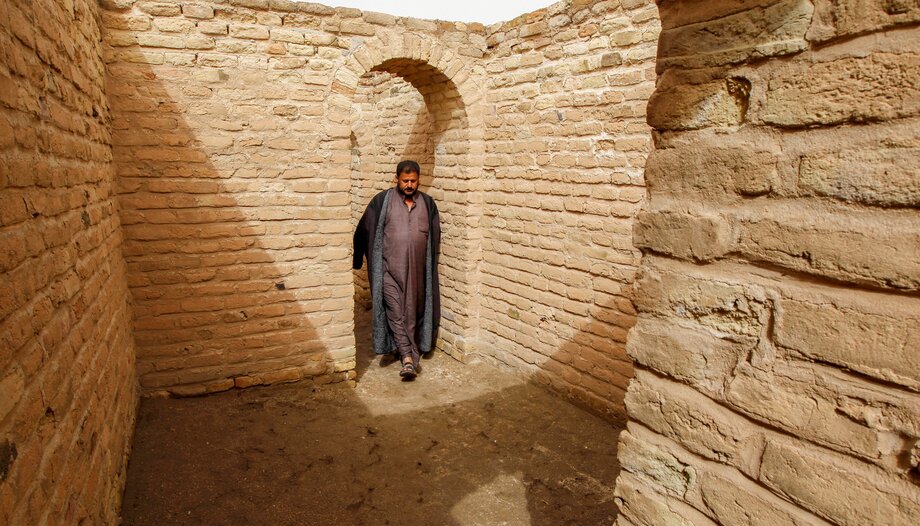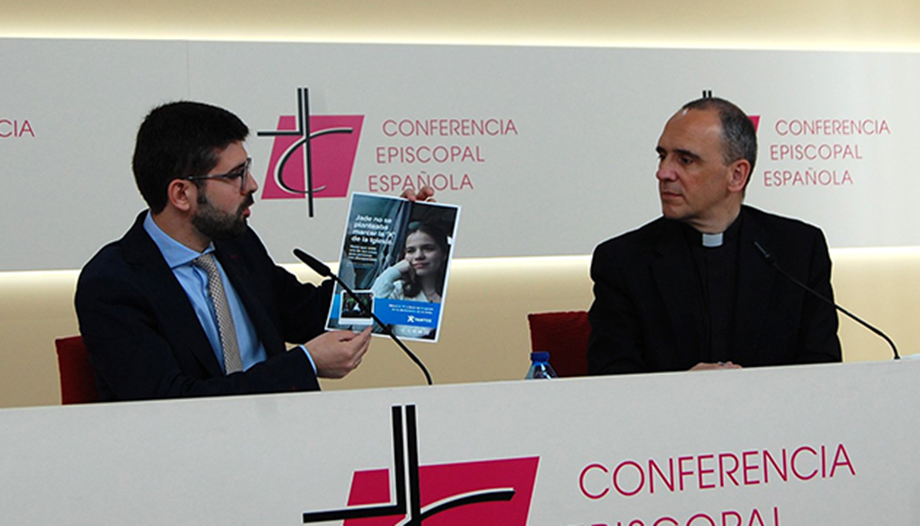The Press Office of the Holy See has published the texts that, on Good Friday evening, will accompany the Stations of the Cross that will be celebrated in the Colosseum in Rome starting at approximately 9:00 pm.
These texts have been prepared by Pope Francis and focus especially on a prayerful contemplation of the Passion and Death of Our Lord.
The following is the Spanish translation of these texts:
Stations of the Cross 2024 "In prayer with Jesus on the Way of the Cross" written by Pope Francis
Lord Jesus, as we gaze upon your cross we understand your total self-giving for us. We consecrate and offer you this time. We want to spend it with you, who prayed from Gethsemane to Calvary. In the Year of Prayer we unite ourselves to your prayerful journey.
From the Gospel according to St. Mark (14:32-37)
They came to an estate called Gethsemane [...]. Then he took with him Peter, James and John, and he began to be afraid and distressed. Then he said to them, "Stay here and watch. And he went forward a little and fell to the ground and said, "Abba, Father, all things are possible for you; take this cup away from me, but not my will but yours be done. Then he returned and found his disciples asleep. And Jesus said to Peter, "[...] Could you not have stayed awake for even one hour?".
Lord, you prepared each of your journeys with prayer, and now in Gethsemane you are preparing the Passover. And you prayed saying Abba - Father - everything is possible for you, because prayer is above all dialogue and intimacy, but it is also struggle and petition: Take this cup away from me! Likewise, it is a trusting surrender and a gift: But not my will, but yours be done. Thus, prayerful, you entered through the narrow door of our pain and went through it to the end. You had "fear and anguish" (Mk 14:33): fear in the face of death, anguish under the weight of our sins, which you bore upon yourself, while an infinite bitterness invaded you. Nevertheless, in the hardest part of the struggle you prayed "more intensely" (Lk. 22:44). In this way, you transformed the violence of pain into an offering of love.
You ask only one thing of us: to stay with you and watch over you. You do not ask us the impossible, but that we remain close to you. And yet, how many times have I wandered away from you! How many times, like the disciples, instead of keeping watch, I fell asleep, how many times I did not have time or desire to pray, because I was tired, anesthetized by comfort or with a numb soul. Jesus, repeat again to me, repeat again to us, who are your Church: "Rise and pray" (Lk 22:46). Wake us up, Lord, shake the lethargy from our hearts, because today too, especially today, you need our prayer.
Jesus is condemned to death
The High Priest, standing up before the assembly, questioned Jesus, "Do you answer nothing to what these testify against you?" He remained silent and answered nothing. [...] Pilate questioned him again, "Do you answer nothing? Look at everything they accuse you of!" But Jesus answered nothing more, and Pilate was greatly astonished (Mk 14:60-61; 15:4-5).
Jesus, you are life, but you are condemned to death; you are the truth and yet you are the victim of a false process. But why don't you rebel, why don't you raise your voice and explain your own reasons, why don't you challenge the wise and the powerful as you have always done? Jesus, your attitude is disconcerting; at the decisive moment you do not speak, but remain silent. Because the stronger the evil, the more radical your response. And your response is silence. But your silence is fruitful: it is prayer, it is meekness, it is forgiveness, it is the way to redeem evil, to convert your sufferings into a gift that you offer us. Jesus, I realize that I hardly know you because I know little of your silence, because in the frenzy of hurry and busyness, absorbed by things, trapped by the fear of not staying afloat or by the eagerness of always wanting to put myself at the center, I do not find time to stop and stay with you; to allow you, Word of the Father, to work in silence. Jesus, your silence shakes me, it teaches me that prayer is not born of lips that move, but of a heart that knows how to listen. For to pray is to become docile to your Word, it is to adore your presence.
Let us pray, saying: Speak to my heart, Jesus
You who respond to evil with good
Speak to my heart, Jesus
Thou who quenchest the cries with meekness
Speak to my heart, Jesus
You who detest murmuring and reproaches
Speak to my heart, Jesus
You who know me intimately
Speak to my heart, Jesus
You who love me more than I can love myself
Speak to my heart, Jesus
Jesus carries the cross
He bore our sins on the cross,
carrying them in his body,
that we, having died to sin, may live for righteousness.
By his stripes you were healed (1 Pet. 2:24).
Jesus, we too carry our crosses, sometimes very heavy ones: an illness, an accident, the death of a loved one, a disappointment in love, a lost child, a lack of work, an inner wound that does not heal, the failure of a project, one more hope that is dashed... Jesus, how can we pray when we feel crushed by life, when a weight presses down on our hearts, when we are under pressure and we no longer have the strength to react? Your answer is found in an invitation: "Come to me, all who are afflicted and burdened, and I will give you relief" (Mt 11:28). Come to you; I, on the other hand, withdraw into myself, mentally ruminating, digging into the past, complaining, sinking into victimhood, a paladin of negativity. Come to me; it has not seemed enough for you to tell us, but you have come to us to take our cross upon your shoulders, and take its weight from us. This is what you desire: that we unload on you our weariness and our sorrows, because you want us to feel free and loved in you. Thank you, Jesus. I unite my cross to yours, I bring you my fatigue and my miseries, I place on you all the burden I have in my heart.
Let us pray, saying: I come to you, O Lord
With my personal story
I come to you, Lord
With my tiredness
I come to you, Lord
With my limits and my frailties
I come to you, Lord
With my fears
I come to you, Lord
Trusting only in your love
I come to you, Lord
Jesus falls for the first time
Truly I tell you, unless a grain of wheat falls into the ground and dies, it remains alone; but if it dies, it bears much fruit (Jn 12:24).
Jesus, you have fallen, what are you thinking, how do you pray, prostrate on your face to the ground? But above all, what is it that gives you the strength to get up again? As you lie face down on the ground and can no longer see heaven, I imagine you repeating in your heart: Father, you who are in heaven. The loving gaze of the Father resting on you is your strength. But I also imagine that, as you kiss the arid and cold earth, you think of man, taken from the earth, you think of us, who are at the center of your heart; and that you repeat the words of your testament: "This is my Body, which is given for you" (Lk 22:19). The Father's love for you and yours for us: love, that is the stimulus that makes you get up and go on. For he who loves does not collapse, but begins again; he who loves does not grow weary, but runs; he who loves flies. My Jesus, I always ask You for many things, but I need only one: to know how to love. I will fall in life, but with love I will be able to get up again and move forward, as you did, you who have experience of falling. Your life, in fact, has been a continuous fall towards us: from God to man, from man to servant, from servant to crucified, to the tomb; you fell to the earth like a seed that dies, you fell to raise us from the earth and take us to heaven. You who raise from the dust and rekindle hope, give me the strength to love and to begin again.
Let us pray saying: Jesus, give me the strength to love and start again.
When disillusionment prevails
Jesus, give me the strength to love and to start over again
When the judgment of others comes down upon me
Jesus, give me the strength to love and to start over again
When things are not going well and I become intolerant
Jesus, give me the strength to love and to start over again
When I feel I can't take it anymore
Jesus, give me the strength to love and to start over again
When I am oppressed by the thought that nothing will ever change
Jesus, give me the strength to love and to start over again
Jesus meets his mother
When Jesus saw the mother and the disciple whom he loved standing near her, he said to the disciple, "Here is your mother. And from that moment the disciple took her into his home (Jn 19:26-27).
Jesus, your own have forsaken you; Judas has betrayed you, Peter has denied you. You are left alone with the cross, but there is your mother. There is no need for words, her eyes are enough, they know how to look suffering in the face and to assume it. Jesus, in Mary's gaze, full of tears and light, you find the pleasant memory of her tenderness, of her caresses, of her loving arms that have always welcomed and supported you. The gaze of one's own mother is the gaze of memory, which cements us in the good. We cannot do without a mother who gives birth to us, but neither can we do without a mother who puts us in the world. You know this and from the cross you give us your own mother. Here is your mother, you say to the disciple, to each one of us.
After the Eucharist, you give us Mary, your last gift before you die. Jesus, your way was consoled by the memory of her love; my way, too, needs to be grounded in the memory of the good. However, I realize that my prayer is poor in memory: it is quick, hurried; with a list of needs for today and tomorrow. Mary, stop my race, help me to remember: to guard grace, to remember God's forgiveness and wonders, to rekindle my first love, to savor anew the wonders of providence, to weep with gratitude.
Let us pray saying: Rekindle in me, O Lord, the memory of your love.
When the wounds of the past reappear
Rekindle in me, O Lord, the memory of your love.
When I lose my sense of direction and sense of things
Rekindle in me, O Lord, the memory of your love.
When I lose sight of the gifts I have received
Rekindle in me, O Lord, the memory of your love.
When I lose sight of the gift of my own being
Rekindle in me, O Lord, the memory of your love.
When I forget to thank you
Rekindle in me, O Lord, the memory of your love.
5. Jesus is helped by the Cyrenean
As they [the soldiers] led him away, they arrested a certain Simon of Cyrene, who was returning from the country, and loaded him with the cross, so that he might carry it behind Jesus (Lk 23:26).
Jesus, how often, when faced with life's challenges, we presume to be able to do everything by our own strength alone. How difficult it is for us to ask for help, either for fear of giving the impression that we are not up to the task, or because we are always concerned about looking good and showing off! It is not easy to trust, and even less easy to abandon oneself. On the other hand, those who pray are in need, and you, Jesus, are accustomed to abandoning yourself in prayer. That is why you do not disdain the help of the Cyrenian. You show your frailties to a simple man, to a peasant returning from the fields. Thank you because, by letting yourself be helped in your need, you erase the image of an invulnerable and distant god. You do not show yourself unbeatable in power, but invincible in love, and you teach us that to love means to help others precisely there, in the weaknesses of which they are ashamed. In this way, weaknesses are transformed into opportunities. This is what happened to the Cyrenean: your weakness changed his life and one day he would realize that he had helped his Savior, that he had been redeemed through the cross he carried. So that my life may also change, I beg you, Jesus: help me to lower my defenses and to let myself be loved by you; right there, where I am most ashamed of myself.
Let us pray saying: Heal me, Jesus
From any presumption of self-sufficiency
Heal me, Jesus
From believing that I can do without you and others
Heal me, Jesus
From the desire for perfectionism
Heal me, Jesus
From the reluctance to give you my miseries
Heal me, Jesus
Of the haste shown to the needy I meet on my path
Heal me, Jesus
6. Jesus is comforted by Veronica who wipes his face.
Blessed be God [...] the Father of mercies and God of all comfort, who comforts us in all our troubles, so that we may be able to give to those who suffer the same comfort [...]. For just as we share abundantly in the sufferings of Christ, so also through Christ our consolation abounds (2 Cor 1:3-5).
Jesus, there are so many who witness the barbaric spectacle of your execution and, without knowing you and without knowing the truth, pass judgments and condemnations, casting upon you infamy and contempt. It happens also today, Lord, and it is not even necessary a macabre cortege; a keyboard is enough to insult and publish condemnations. But while so many shout and judge, a woman breaks through the crowd. She does not speak, she acts. She does not protest, she sympathizes. She goes against the current, alone, with the courage of compassion; she takes a risk for love, she finds a way to pass through the soldiers just to bring you the comfort of a caress on your face. Her gesture will go down in history as a gesture of consolation. How many times will I have invoked your consolation, Jesus! And now Veronica reminds me that you need it too. You, God near, you ask for my nearness; you, my consoler, you want to be consoled by me. Unloved Love, you seek even today in the crowd hearts sensitive to your suffering, to your pain. You seek true adorers, who in spirit and in truth (cf. Jn 4:23) remain with you (cf. Jn 15), forsaken Love. Jesus, enkindle in me the desire to be with you, to adore and console you. And grant that I, in your name, may be a consolation to others.
Let us pray saying: Make me a witness of your consolation.
God of mercy, you are close to those whose hearts are wounded.
Make me a witness of your consolation
God of tenderness, you are moved by our tenderness.
Make me a witness of your consolation
God of compassion, who loathes indifference
Make me a witness of your consolation
You, who are saddened when I point the finger at others
Make me a witness of your consolation
You who did not come to condemn but to save
Make me a witness of your consolation
Jesus falls for the second time under the weight of the cross.
[The younger son] came to his senses and said, "I will go to my father's house and say to him, 'Father, I have sinned' [...]. Then he departed and returned to his father's house. While he was still far away, his father saw him and was deeply moved, ran to meet him, embraced him and kissed him. The young man said to him, "Father, I have sinned [...]; I am not worthy to be called your son." But the father said: [...] "My son was dead and is alive again; he was lost and is found" (Lk 15:17-18,20-22,24).
Jesus, the cross is heavy; it carries within itself the weight of defeat, of failure, of humiliation. I understand it when I feel crushed by things, harassed by life and misunderstood by others; when I feel the excessive and exasperating weight of responsibility and work, when I feel oppressed in the clutches of anxiety, assaulted by melancholy, while a suffocating thought repeats to me: you will not get ahead, this time you will not get up. But things get even worse. I realize that I hit rock bottom when I fall again, when I fall back into my mistakes, my sins, when I am scandalized by others and then realize that I am no different from them. There is nothing worse than feeling disappointed in oneself, crushed by feelings of guilt. But you, Jesus, fell many times under the weight of the cross to be at my side when I fall. With you hope never ends, and after every fall we get up again, because when I make mistakes you do not tire of me, but draw closer to me. Thank you because you wait for me; thank you, for though I fall many times you forgive me always, always. Remind me that my falls can become crucial moments in my journey, because they lead me to understand that the only thing that matters is that I need you. Jesus, imprint in my heart the most important certainty: that I really get back on my feet only when you lift me up, when you free me from sin. Because life does not begin again with my words, but with your forgiveness.
Let us pray saying: Lift me up, Jesus.
When, paralyzed by distrust, I feel sadness and desperation
Lift me up, Jesus
When I see my incapacity and feel useless
Lift me up, Jesus
When embarrassment and fear of failure prevail
Lift me up, Jesus
When I am tempted to lose hope
Lift me up, Jesus
When I forget that my strength is in your forgiveness
Lift me up, Jesus
8. Jesus meets the women of Jerusalem
Many of the people followed him, and a good number of women, who beat their breasts and mourned for him (Lk 23:27).
Jesus, who accompanies you to the end on your way to the cross? It is not the powerful, who wait for you on Calvary, nor the spectators who stand far away, but the simple people, great in your eyes, but small in the eyes of the world. They are those women, to whom you have given hope; they have no voice, but they make themselves heard. Help us to recognize the greatness of women, those who at Easter were faithful to you and did not abandon you, those who even today continue to be discarded, suffering outrage and violence. Jesus, the women you meet beat their breasts and mourn for you. They do not weep for themselves, but they weep for you, they weep for the evil and sin of the world. Their prayer made of tears reaches your heart. Does my prayer know how to weep? Am I moved before you, crucified for me, before your kind and wounded love? Do I weep for my falsehoods and my inconstancy? Before the tragedies of the world, does my heart remain cold or is it moved? How do I react before the madness of war, before the faces of children who no longer know how to smile, before their mothers who see them malnourished and hungry without even having more tears to shed? You, Jesus, have wept for Jerusalem, you have wept for the hardness of our hearts. Shake me from within, give me the grace to weep while praying and to pray while weeping.
Let us pray saying: Jesus, soften my hardened heart.
You who know the secrets of the heart
Jesus, soften my hardened heart
You who are saddened by the harshness of the moods
Jesus, soften my hardened heart
You who love contrite and humiliated hearts
Jesus, soften my hardened heart
You who with forgiveness wiped away Peter's tears
Jesus, soften my hardened heart
You who transform tears into song
Jesus, soften my hardened heart
9. Jesus is stripped of his garments.
"Lord, when did we see you hungry and feed you, thirsty and give you drink, when did we see you passing through and house you, naked and clothe you, when did we see you sick or in prison and come to you?" [...]. He will answer them: "Truly I tell you, whenever you did it to the least of my brethren, you did it to me" (Mt 25:37-40).
Jesus, these are the words you spoke before the Passion. Now I understand your insistence on identifying yourself with those in need: you, imprisoned; you, a stranger, led out of the city to be crucified; you, naked, stripped of your clothes; you, sick and wounded; you, thirsty on the cross and hungry for love. Grant that I may see you in those who suffer and that I may see those who suffer in you, for you are there, in those who are stripped of dignity, in the Christs humiliated by arrogance and injustice, by unjust profits obtained at the expense of others and in the face of general indifference. I look at you, Jesus, stripped of your garments, and I understand that you invite me to strip myself of so many empty exteriorities. For you do not look at appearances, but at the heart. And you do not want a sterile prayer, but one that is fruitful in charity. Stripped God, uncover me too. For it is easy to speak, but then, do I truly love you in the poor, in your wounded flesh? Do I pray for those who have been stripped of dignity? Or do I pray only to cover my own needs and clothe myself in security? Jesus, your truth lays me bare and leads me to concern myself with what matters: you crucified, and the crucified brethren. Grant that I may understand this now, so that I may not find myself lacking in love when I must come before you.
Let us pray saying: Take me away, Lord Jesus.
Attachment to appearances
Take me away, Lord Jesus
From the armor of indifference
Take me away, Lord Jesus
From believing that I don't have to help others
Take me away, Lord Jesus
Of a cult made of conventionality and exteriority
Take me away, Lord Jesus
From the conviction that in life all is well if I am well
Take me away, Lord Jesus
Jesus is nailed to the cross
When they came to the place called "the place of the Skull," they crucified him and the criminals, one on his right and the other on his left. Jesus said, "Father, forgive them, for they know not what they do" (Lk 23:33-34).
Jesus, they pierce your hands and feet with nails, lacerating your flesh, and just now, while the physical pain becomes more unbearable, the impossible prayer springs from your lips, you forgive the one who is driving the nails into your wrists. And not just once, but many times, as the Gospel recalls, with that verb that indicates a repeated action, you said "Father, forgive". Therefore, with you, Jesus, I too can find the courage to choose the forgiveness that frees the heart and relaunches life. Lord, it is not enough for you to forgive us, but you also justify us before the Father: they do not know what they are doing. Take up our defense, become our advocate, intercede for us. Now that your hands, with which you blessed and healed, are nailed, and your feet, with which you brought the good news, can no longer walk, now, in impotence, you reveal to us the omnipotence of prayer. On the summit of Golgotha you reveal to us the height of intercessory prayer that saves the world. Jesus, may I pray not only for myself and my loved ones, but also for those who do not love me and do me harm; may I pray according to the desires of your heart, for those who are far from you; making reparation and interceding on behalf of those who, ignoring you, do not know the joy of loving you and of being forgiven by you.
Let us pray saying: Father, have mercy on us and on the whole world.
For the sorrowful passion of Jesus
Father, have mercy on us and on the whole world.
By the power of his wounds
Father, have mercy on us and on the whole world.
For his forgiveness on the cross
Father, have mercy on us and on the whole world.
For how many forgive for love of you
Father, have mercy on us and on the whole world.
Through the intercession of those who believe, adore, hope and love you
Father, have mercy on us and on the whole world.
11. Jesus' cry of abandonment on the cross
From noon until three o'clock in the afternoon, darkness covered the whole region. At about three o'clock in the afternoon, Jesus cried out in a loud voice, "Eli, Eli, lema sabachthani," which means, "My God, my God, why have you forsaken me?" (Mt 27:45-46).
Jesus, here is a prayer without precedent: you cry out to the Father for your abandonment. You, God of heaven, who do not reply thunderously to any answer, but ask why? At the apex of the Passion you experience the estrangement from the Father and you no longer even call him Father, as you always do, but God, as if you were incapable of identifying his face. Why? To submerge yourself to the bottom of the abyss of our pain. You did it for me, so that when I see only darkness, when I experience the collapse of certainties and the shipwreck of living, I no longer feel alone, but believe that you are there with me; you, God of communion, you experienced abandonment in order to no longer leave me as a hostage of loneliness. When you cried out your why, you did so with a psalm; thus you turned even the most extreme desolation into prayer. This is what to do in the storms of life; instead of keeping silent and enduring, cry out to you. Glory to you, Lord Jesus, for you have not fled from my desolation, but have dwelt in it to the very depths. Praise and glory to you who, taking upon yourself all remoteness, have made yourself close to those who are farthest from you. And I, in the darkness of my whys, find you, Jesus, light in the night. And in the cry of so many people who are alone and excluded, oppressed and abandoned, I see you, my God: make me recognize you and love you.
Let us pray saying: Make me, Jesus, recognize you and love you.
In unborn children and abandoned infants
Make me, Jesus, recognize you and love you
In so many young people, waiting for someone to hear their cries of pain
Make me, Jesus, recognize you and love you
In the many discarded elderly
Make me, Jesus, recognize you and love you
In prisoners and in those who find themselves alone
Make me, Jesus, recognize you and love you
In the most exploited and forgotten villages
Make me, Jesus, recognize you and love you
12. Jesus dies commending himself to the Father and granting Paradise to the good thief.
[One of the criminals crucified] said, "Jesus, remember me when you come to establish your Kingdom. He answered him, "I tell you the truth, today you will be with me in Paradise" [...]. Jesus, with a cry, exclaimed, "Father, into your hands I commend my spirit". And saying this, he breathed his last (Lk 23:42-43,46).
Jesus, an evildoer goes to Paradise! He commends himself to you and you commend him with you to the Father. God of the impossible, you make a thief a saint. And not only that: on Calvary you change the course of history. You turn the cross, which is an emblem of torment, into an icon of love; you change the wall of death into a bridge to life. You transform darkness into light, separation into communion, pain into dance and even the tomb - the last station of life - into the starting point of hope. But these transformations you accomplish with us, never without us. Jesus, remember me: this sincere prayer allowed you to work wonders in the life of that evildoer. What an unheard-of power that of prayer. Sometimes I think that my prayer is not heard, whereas the essential thing is to persevere, to be constant, to remember to say to you: "Jesus, remember me". Remember me and my evil will no longer be an end, but a new beginning. Remember me, put me back in your heart, even when I move away, even when I get lost in the dizzyingly spinning wheel of life. Remember me, Jesus, because to be remembered by you, as the good thief shows, is to enter Paradise. Above all, remind me, Jesus, that my prayer can change history.
Let us pray, saying: Jesus, remember me.
When hope disappears and disillusionment reigns
Jesus, remember me
When I am unable to make a decision
Jesus, remember me
When I lose confidence in myself or in others.
Jesus, remember me
When I lose sight of the greatness of your love
Jesus, remember me
When I think my prayer is useless
Jesus, remember me
13. Jesus is taken down from the cross and handed over to Mary.
Simeon [...] said to Mary, the mother: "This child will be a cause of downfall and of elevation for many in Israel; he will be a sign of contradiction, and a sword will pierce your own heart" (Lk 2:33-35).
Mary, after your "yes" the Word became flesh in your womb; now his tortured flesh lies in your lap. That child you held in your arms is now a mangled corpse. Yet now, in the most painful moment, the offering of yourself shines forth: a sword pierces your soul and your prayer remains a "yes" to God. Mary, we are poor in "yeses", but rich in "ifs": if only I had had better parents, if they had understood and loved me more, if my career had gone better, if I had not had that problem, if only I had not suffered more, if only God would listen to me... Always asking ourselves the why of things, it is difficult for us to live the present with love. You would have so many "ifs" to say to God, instead, you keep saying "yes", be fulfilled in me. Strong in faith, you believe that pain, pierced by love, bears fruits of salvation; that suffering accompanied by God does not have the last word. And as you hold in your arms the lifeless Jesus, the last words he spoke to you resound in your heart: Behold your son! Mother, I am that son! Receive me in your arms and bend over my wounds. Help me to say "yes" to God, "yes" to love. Mother of mercy, we live in a merciless time and we need compassion: you, tender and strong, anoint us with meekness; undo the resistances of the heart and the knots of the soul.
Let us pray, saying: Take me by the hand, Mary
When I give in to recrimination and victimhood
Take me by the hand, Mary
When I stop struggling and accept to live with my falsehoods
Take me by the hand, Mary
When I hesitate and don't have the courage to say "yes" to God
Take me by the hand, Mary
When I am lenient with myself and inflexible with others.
Take me by the hand, Mary
When I want the Church and the world to change, but I don't change
Take me by the hand, Mary
14. Jesus is laid in the tomb of Joseph of Arimathea.
When evening came, a rich man from Arimathea, named Joseph, who had also become a disciple of Jesus, came to Pilate to ask for the body of Jesus. [Joseph took the body, wrapped it in a clean linen cloth, and laid it in a new tomb that had been hewn out of the rock (Mt 27:57-60).
Joseph, that is the name that, together with that of Mary, marks the dawn of Christmas and also marks the dawn of Easter. Joseph of Nazareth, warned in a dream, boldly took Jesus to save him from Herod; you, Joseph of Arimathea, take his body, not knowing that an impossible and wonderful dream will come true right there, in the tomb that you gave to Christ when you thought he could do nothing more for you. On the other hand, it is true that every gift made to God is always rewarded by him. Joseph of Arimathea, you are the prophet of fearless courage. To give your gift to a dead man, you go to the dreaded Pilate and beg him to allow you to give Jesus the tomb that you had ordered to be built for you. Your prayer is persistent and words are followed by deeds. Joseph, remind us that persevering prayer bears fruit and pierces even the darkness of death; that love does not remain unanswered, but gives new beginnings. Your tomb, which - unique in history - will be a source of life, was new, freshly hewn out of the rock. And I, what new thing do I give to Jesus this Easter? A little time to be with Him? A little love for others? My buried fears and miseries, which Christ is waiting for me to offer Him, as you, Joseph, did with the tomb? It will truly be Easter if I give something of mine to Him who gave His life for me; for it is in giving that one receives; and because life is found when it is lost and possessed when it is given.
Let us pray saying: Lord, have mercy
Of me, negligent to become
Lord, have mercy
From me, who likes to receive much, but give little.
Lord, have mercy
Of me, unable to surrender to your love
Lord, have mercy
Of us, quick to serve ourselves, but slow to serve others.
Lord, have mercy
Of our world, plagued by the sepulchers of our selfishness
Lord, have mercy
Concluding invocation (the name of Jesus, 14 times)
Lord, we pray to you like the needy, the frail and the sick in the Gospel, who begged you with the simplest and most familiar word: pronouncing your name.
Jesus, your name saves, for you are our salvation.
Jesus, you are my life and in order not to get lost on the road I need you, who forgives and lifts up, who heals my heart and gives meaning to my pain.
Jesus, you took my wickedness upon yourself, and from the cross you do not point your finger at me, but embrace me; you, meek and humble of heart, heal me from bitterness and resentment, free me from prejudice and mistrust.
Jesus, I contemplate you on the cross and I see love unfolding before my eyes, which gives meaning to my being and is the goal of my journey. Help me to love and forgive, to overcome intolerance and indifference, not to complain.
Jesus, on the cross you thirst for my love and my prayer; you need them to carry out your plans for good and peace.
Jesus, I thank you for those who respond to your invitation and have the perseverance to pray, the courage to believe and the constancy to go forward in spite of difficulties.
Jesus, I commend to you the shepherds of your holy people: may their prayer sustain the flock; may they find time to be before you and may they liken their hearts to yours.
Jesus, I bless you for the contemplatives whose prayer, hidden from the world, is pleasing to you. Protect the Church and humanity.
Jesus, I bring before you the families and individuals who have prayed tonight from their homes; the elderly, especially those who are alone; the sick, gems of the Church who unite their sufferings to yours.
Jesus, may this prayer of intercession embrace our brothers and sisters in so many parts of the world who suffer persecution because of your name, those who suffer the tragedy of war and those who, drawing strength from you, carry heavy crosses.
Jesus, by your cross you have made us all one: gather believers together in communion, give us fraternal and patient feelings, help us to cooperate and to walk together; keep the Church and the world in peace.
Jesus, holy judge who will call me by name, deliver me from rash judgments, gossip and violent and offensive words.
Jesus, before you died, you said "everything has been fulfilled". I, in my misery, will never be able to say it. But I trust in you, because you are my hope, the hope of the Church and of the world.
Jesus, one more word I want to say to you and keep repeating to you: Thank you! Thank You, my Lord and my God.
The previous Stations of the Cross of Francis' pontificate
The first of the Stations of the Cross was held in 2013, and the meditations were prepared by a Lebanese youth group under the guidance of Cardinal Béchara Boutros Raï. Monsignor Giancarlo Maria Bregantini, Archbishop of Campobasso-Boiano was the author of the meditations that were read. in 2014 and was followed by Monsignor Renato Corti in 2015by Cardinal Gualtiero Bassetti, Archbishop of Perugia-Città della Pieve, and by Cardinal Gualtiero Bassetti, Archbishop of Perugia-Città della Pieve in 2016.
The following year, Anne-Marie PelletierThe first woman to be awarded the Ratzinger Prize was the author of the meditations.
In 2018, these Stations of the Cross texts were prepared by. young people between 16 and 27 years of ageThe following year, the texts revolved around one of the issues of greatest concern to the Pope: human traffickingEugenia Bonetti, a Consolata Missionary Sister.
The pandemic left behind an unusual image of the Stations of the Cross 2020The following year, the scouts (Agesci "Foligno I", in Umbria) and the Roman parish of Santi Martiri di Uganda were the authors of these prayers. The following year, the scouts (Agesci "Foligno I", in Umbria) and the Roman parish of Santi Martiri di Uganda were the authors of these prayers. meditations.
Various families were the authors of the meditations in 2022, while, in 2023In the tenth year of the Pope's pontificate, this devotional act made a "tour" of various regions afflicted by violence, poverty and fratricidal hatred.
 Chile and Peru: Pope defends women and indigenous people
Chile and Peru: Pope defends women and indigenous people Pope calls Peru and Chile a "land of saints
Pope calls Peru and Chile a "land of saints
